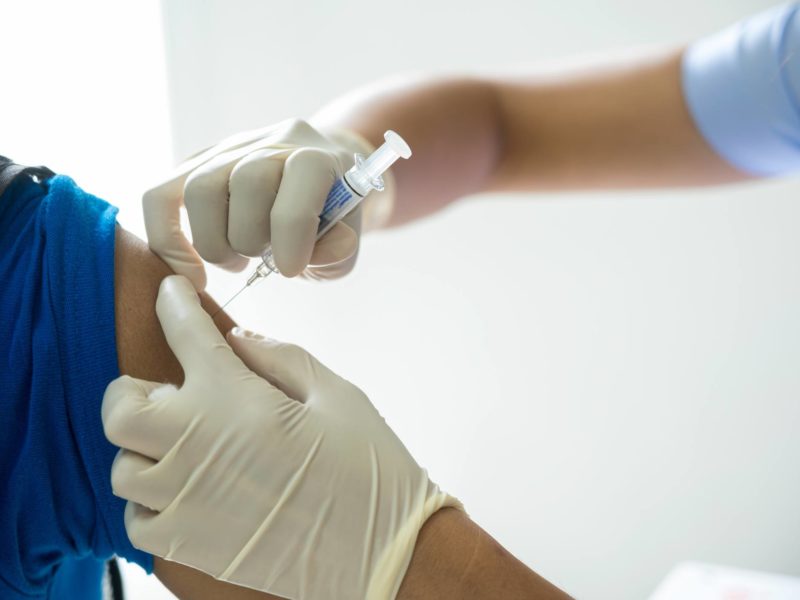Texas A&M: A Major Center For Coping With Ebola Problems, Policy And Procedures
 Texas A&M University is emerging as a major resource in coping with the dreaded Ebola virus. It’s likely no other university is involved in addressing so many aspects of the devastating disease that has, according to the World Health Organization, already killed more than 5,100 people.
Texas A&M University is emerging as a major resource in coping with the dreaded Ebola virus. It’s likely no other university is involved in addressing so many aspects of the devastating disease that has, according to the World Health Organization, already killed more than 5,100 people.
Texas A&M has the trained minds, the resources, the how-to and the can-do to be a major factor in stopping Ebola, officials note, and it’s readily and willingly sharing that expertise.
Faculty, staff and students at several colleges and other units of Texas A&M and agencies affiliated with it have rolled up their sleeves and are attacking the Ebola crisis.
Such efforts, officials emphasize, personify Texas A&M’s mission as a land-grant institution that focuses on teaching, research and service.
“Texas A&M has the trained minds and the resources to be a major factor in stopping Ebola, and we are readily and willingly sharing that expertise,” said John Sharp, chancellor of The Texas A&M University System. “Such efforts personify Texas A&M’s mission as a land-grant institution that focuses on teaching, research and service.”
The person in Texas selected to lead the fight is Brett Giroir, handpicked by Texas Gov. Rick Perry to assume the role of director of the newly created Texas Task Force on Infectious Disease Preparedness and Response, which will assess ways to respond to any pandemic disease, including Ebola. Giroir, an M.D. and CEO of the Texas A&M Health Science Center, is heading up a team of experts in epidemiology and infectious disease, including three other Texas A&M representatives.
“We live in an interconnected world, where an outbreak anywhere is a risk everywhere,” Giroir explains.
“As a result, control of future potential disease outbreaks will present even greater challenges. We need to have clear, decisive and prospective management aimed not only at rapid response, but also long-term solutions. We need to be fully prepared for a worst-case scenario, no matter what form that may take.”
For more about Giroir and his team, click here.
What exactly is Ebola and what is known about it? A useful question-and-answer fact sheet featuring Scott Lillibridge, M.D., an infectious disease expert and assistant dean at the Texas A&M Health Science Center School of Public Health, can be found here.
Students at Texas A&M’s College of Architecture have designed portable Ebola treatment centers. The movable modules can be dismantled and stored at transportation hubs for quick assembly when needed and could be crucial in fighting Ebola at the site of infection.
“The current pandemic in western Africa underscores the need for these inexpensive, easily erected modular facilities where Ebola patients can be treated while isolated from the general public,” says George Mann, holder of the Skaggs Professorship in Health Facilities Design and director of the graduate architecture studio that undertook the project.
One student used an accordion-style design in which modules can be expanded for use and then compressed for transport of storage. They are light enough to be moved via helicopter.
For more information, go here.
With the high infection rates of Ebola, the question is being asked: could medical robots be used for certain treatment procedures?
Texas A&M’s Professor Robin Murphy, a specialist in rescue robotics and a professor of computer science and engineering, has been working on just such a concept. Mobile robots have been used in bomb removal and as drivers in car tests, and using them in health care situations is a logical next step, Murphy believes.
“This is something we can do, but for some families, it is hard to accept that a loved one’s body is being handled by a machine. So we have to be sensitive about these issues,” Murphy says.
Murphy has identified nine specific ways that robots can play a key role in Ebola treatments and procedures, such as disinfection, detection and contamination, waste handling, using mortuary robots to handle deceased patients and others. Her work is drawing international media attention, and she and her group were involved in a meeting on the Texas A&M campus of scientists looking at various aspects of Ebola as part of the White House Office of Science and Technology Policy to study Ebola.
For more about her work, go here.
The problem of what to do about Ebola wastewater and hospital waste is being looked at by Suresh D. Pillai, a Texas A&M AgriLife scientist and director of the National Center for Electron Beam Research.
Contagious hospital waste is usually treated with pressurized steam or is incinerated, while waste water from quarantine units is usually chemically disinfected and then disposed of normally. But in similar fashion as a microwave works, eBeam units could be more effective, Pillai says.
“One of the beautiful aspects of electron-beam technology is that it uses commercial electricity to generate the electrons,” he explains. “There is no need for radioactive isotopes or chemicals.”
For more about his work, click here.
Texas A&M AgriLife Extension Service is part of the Texas Department of Emergency Management response team. Health science professionals at the Family and Consumer Sciences Unit of AgriLife Extension are informing County Extension Agents in each of Texas’ 254 counties and using educational and appropriate information resources for a variety of programs involving Ebola.
The agency’s liaisons to the State Operation Center and Garland Disaster District Committee stay abreast of and stand ready if called upon to represent the agency’s resources.
For more about AgriLife’s efforts, go to http://TexasHelp.tamu.edu and here.
The Texas A&M Health Science Center’s Pandemic Influenza Vaccine Facility will be up and ready by 2017 and is built specifically to handle such contagious diseases as Ebola. It will be able to distribute 50 million doses of medicine for such outbreaks. For more about this project, visit here.
The College of Veterinary Medicine & Biomedical Sciences is studying the link between Ebola and animals and it recently joined in monitoring the first-ever U.S. case of a dog exposed to Ebola.
“The inseparable nature of human and animal health demands that the Ebola virus outbreak be approached holistically,” says Eleanor Green, dean of the college.
“We know that people are concerned about their animals; in fact, they will put themselves at risk for their animals. People should not be reluctant to report early signs of Ebola in order to protect their pets. They should feel secure that they will not be putting their pets at risk by self-reporting.”
For more about Ebola and pets, go to http://vetmed.tamu.edu/ebola-information.
For a happy-ending story about Bentley, the dog that was quarantined for 21 days after his owner contracted Ebola – and regarding Texas A&M veterinarians’ role in it – go here.
Texas A&M College of Science and biology graduate Ketan Patel is helping to run a U.S. Naval Medical Research Center mobile lab that is speeding up Ebola diagnosis on the front lines of the global crisis.
It often takes from 3-5 days to have Ebola confirmed in blood samples, but Patel’s work is reportedly cutting that down to just 3-5 hours, which can be critical time for the patient and his or her family.
For more about the project, go here.
For more about Gov. Perry’s remarks and response to the Ebola crisis, go to http://governor.state.tx.us/news/press-release/20263.
Media contact: Keith Randall, Texas A&M News & Information Services.





